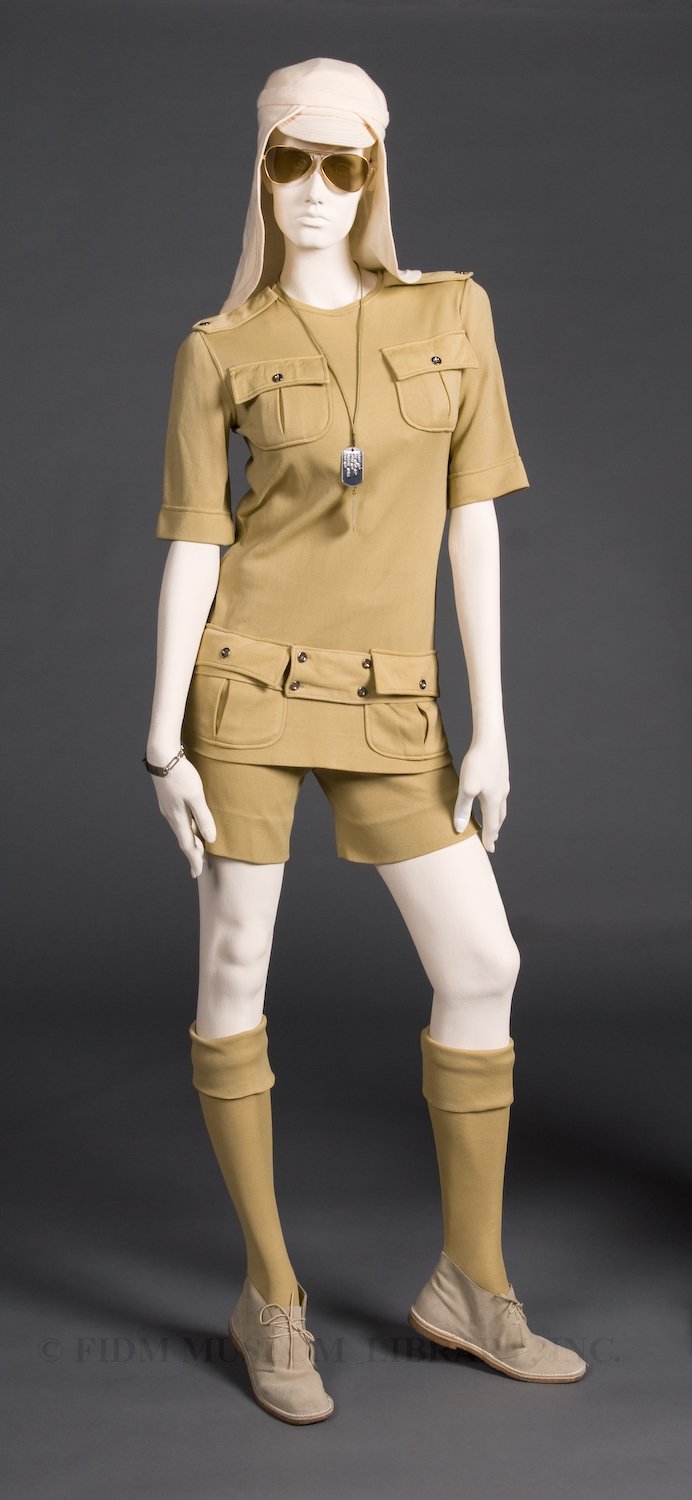Rudi Gernreich
California-based designer Rudi Gernreich (1922-1985) was no stranger to inciting controversy. Often called America's most avant-garde designer, Gernreich pushed fashion into new arenas rather than mining its past for inspiration. Gernreich's most notorious design, the 1964 topless bathing suit, bared the breasts of the wearer and was reportedly banned from beaches and retail stores. In early 1970, he introduced the Unisex look, which consisted of clothing intended to be worn interchangeably by both men and women. Gernreich was also an advocate of the Total Look, wherein hair, makeup and clothing were carefully coordinated to harmonize with each other.
 Military ensemble Rudi Gernreich 1970 Bequest of the Rudi Gernreich Estate G85.331.3A-D
Military ensemble Rudi Gernreich 1970 Bequest of the Rudi Gernreich Estate G85.331.3A-D
This military ensemble from 1970 is a strong example of Gernreich's interest in the Total Look. It was shown in October of 1970, not long after the Kent State shootings of May 4, 1970. During the runway presentation for this collection, some of the models carried rifles. Given the undeniable aggression of this look, it is impossible not to connect Gernreich's military ensemble with the events at Kent State and with general discontent over the continuation of the Vietnam War. All successful designers are able to intuit and interpret cultural trends, so it makes sense to place Gernreich's 1970 military look within this cultural context. Gernreich, however, may have had a slightly different intent when creating this collection. In the late 1960s, popular culture was saturated with images of girlish femininity. Young, waif-like models such as Twiggy and Penelope Tree were the supermodels of their day. Short dresses, often patterned with whimsical or psychedelic images, were commonplace. Clothing for women was intended to emphasize innocence and femininity, rather than strength and ability. Looking back on his career during a 1985 presentation at the Smithsonian Institute in Washington D.C., Gernreich commented, "I did the military look in the late 1960s because some designers were making Scarlett O'Hara clothes, which I thought was an insult to women when they were becoming totally equal to men."1 The FIDM Museum is privileged to house the Rudi Gernreich Archive, which we received at the bequest of his estate. This extensive archive contains numerous garments, patterns, press clippings, accessories and even a few items from Gernreich's personal wardrobe. The entire archive was recently rehoused in a new compact storage facility and is available to researchers by appointment. If you have a particular interest in Gernreich and his work, be sure to check this blog often. Or send us an email...we'd love to hear your thoughts on Rudi Gernreich!
1 Hyde, Nina S. "Back in Fashion." The Washington Post 22 Nov. 1979.: C3.